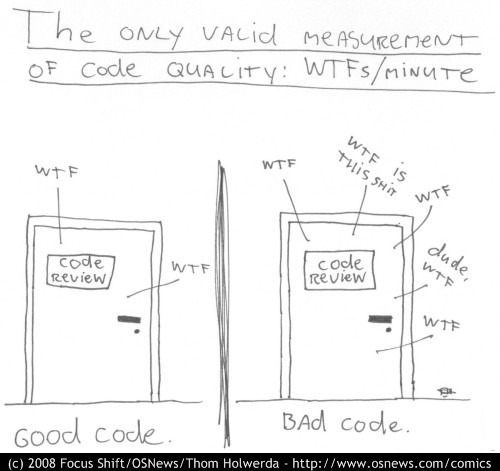
Lately two postings on my feed reader popped up regarding testability. While reading through Michael Boltons Testability entry, I noticed that his list is a very good one regarding testability. The problem with testability from my perspective is the little attendance it seems to get. Over the last week I was inspecting some legacy code. Legacy is meant here in the sense that Michael Feather’s pointed it out in his book “Working effectively with Legacy Code”: Code without tests. Today I did a code review and was upset about the classes I had to inspect. After even five classes I was completely upset and gave up. In the design of the classes I saw large to huge methods, dealing with each other, moving around instances of classes, where no clear repsonsibility was assigned to, variables in places, where one wouldn’t look for them, etc. While I am currently reading through Clean Code from the ObjectMentors, this makes me really upset. Not only after even ten years of test-driven development there is a lack of understanding about this practice, also there is a lack of understanding about testability. What worth is a class, that talks to three hard-coded classes during construction time? How can one get this beast under test? Dependency Injection techniques, Design Principles and all the like were completely absent on these classes. Clearly, this code is not testable – at least to 80% regarding the code coverage analysis I ran after I was able to add some basic unittests, where I could. Code lacking testability often also lacks some other problems. This is where Michael Bolton, James Bach and Bret Pettichord will turn in heuristics and checklists, the refactoring world named these as Smells.
On the Google Testing blog was an entry regarding a common problem, I also ran into several times: Why are we embarrassed to admit that we don’t know how to write tests? Based on my experience project managers and developers think that testers know the answers for all the problems hiding in the software. We get asked, “Can you test this?”, “Until when are you going to be finished?” without a clear understanding of what “tested” means or any insight what we do most of the time. “Perfect Software – and other illusions about testing” is a book from Jerry Weinberg from last year, which I still need to read through in order to know if it’s the right book to spread at my company – but I think so. If a develoepr doesn’t know about the latest or oldest or most spread technology, it’s not a problem at all. If a tester does not know how to “test” this piece of code, it is. He’s blocking the project, making it impossible to deliver on schedule – escalation! What Misko points out in his blog entry is, that the real problem behind this is also testability:
Everyone is in search of some magic test framework, technology, the know-how, which will solve the testing woes. Well I have news for you: there is no such thing. The secret in tests is in writing testable code, not in knowing some magic on testing side. And it certainly is not in some company which will sell you some test automation framework. Let me make this super clear: The secret in testing is in writing testable-code! You need to go after your developers not your test-organization.
I’d like to print this out and hang it all over the place at work.